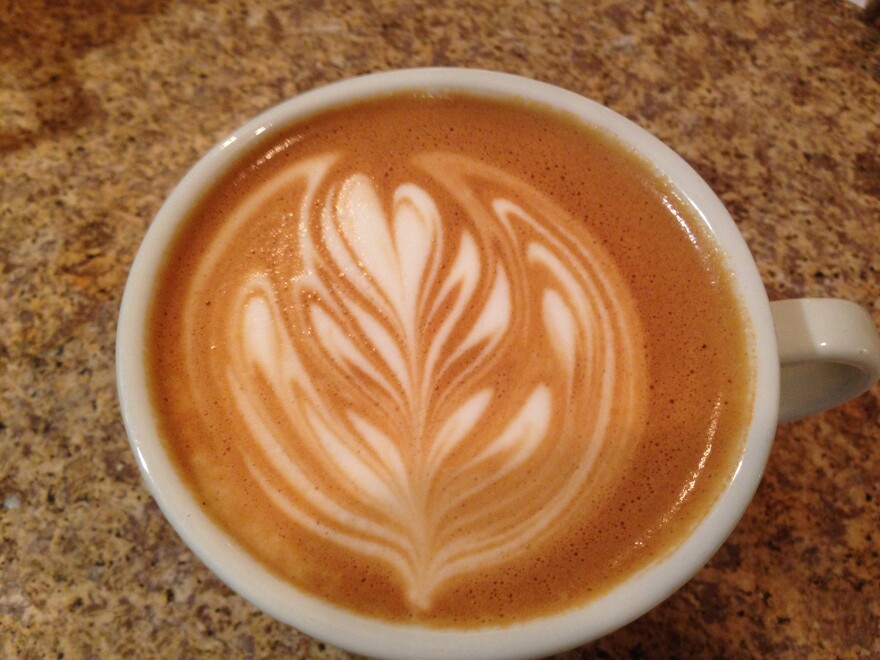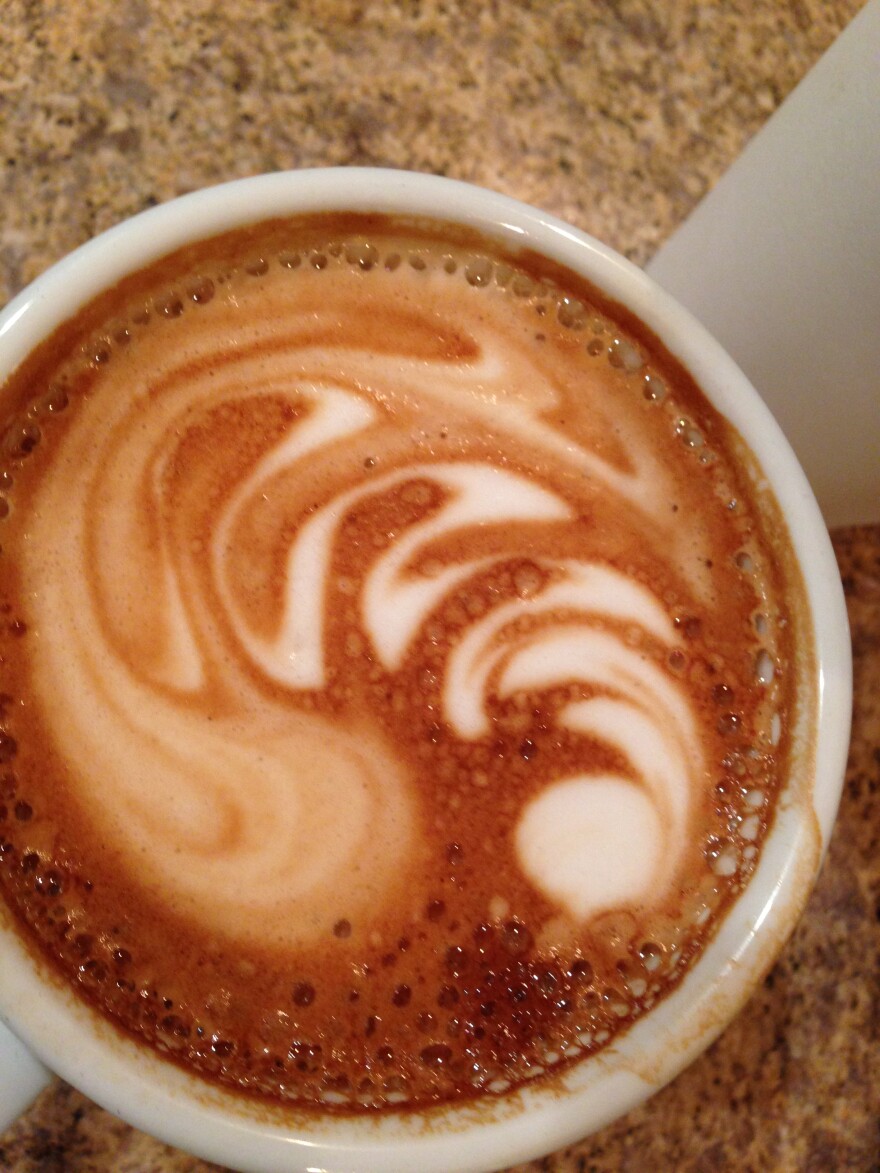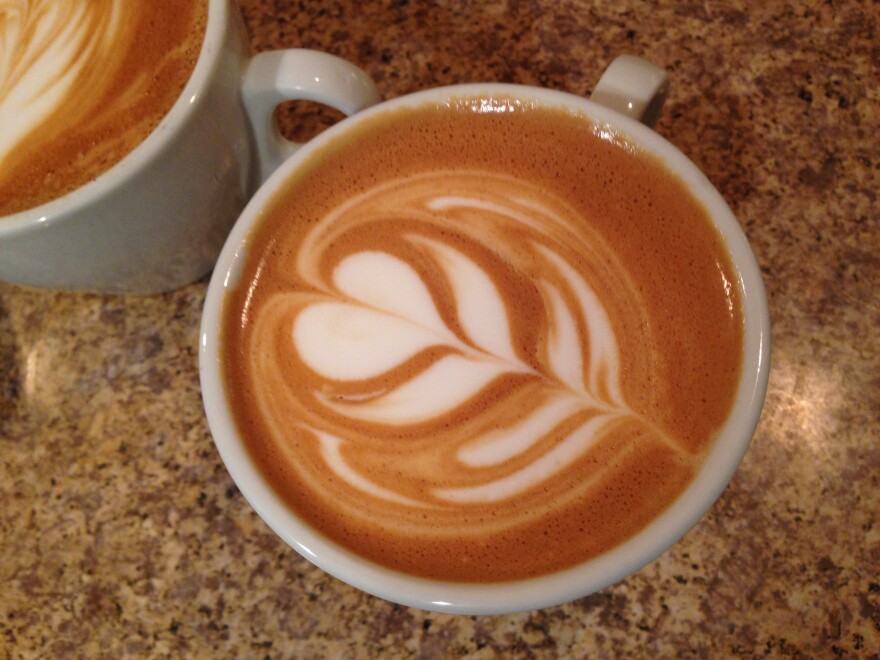The A&E Custom Coffee Roastery in Amherst is hosting a latte art throwdown. We decided to learn more about how latte art is made and judged.
Sam Delay really knows his coffee.
“This espresso that we’re using is our bonbon espresso blend.”
Delay is a trainer and wholesale account manager at A&E. And, as a barista, he puts a lot of pride in his art, describing the exact weight of the coffee grounds, the time it takes to pour, the volume of a double-shot and so on.
“Mugs that are very good for pouring art have a very curved bottom.”
You see what I mean. No detail is overlooked in his effort to decorate the foamy layer of a latte with a creative, swirling pattern.
“What you’re looking for is for your espresso to have a really thick, syrupy consistency because that makes a really good base to pour your art into.”
Delay says latte art can be improved by using a thicker espresso shot even to the point of sacrificing the flavor.

“If you’re a painter, and a lot of times the first step for a painting is just to create the background. And that’s kind of what I’m doing.”
And if the espresso is the canvas, the milk is the paint. Delay steams the milk to get the microfoam just right.
“So I’m gonna turn it on. And that noise right there is air getting let in. And I’m doing that by kinda dropping the pitcher a little bit.”
When the milk is ready, it should look almost like glossy, wet paint. Delay then pours the milk into the cup of espresso, creating a tan surface. Most of the milk cuts right through the filmy layer… until the end when the final flourish of white sets on top in the shape of a heart.
He makes a few more, with different designs.
“A heart, tulip and a rosetta are just the base of pretty much all free-pour.”
But these may not be enough to win. Head judge and A&E owner Emeran Langmaid says she’s seen some really intricate designs.

“The swan was a really big one that was introduced a few years ago. It’s pretty amazing. It kinda has this rosetta part and then they come around and they do this little tip on it.”
Latte art is judged by how symmetrical it is, its position in the cup, contrast and more.
“When you’re starting to get more of those bands in the middle, you’re starting to get more complexity, you’re moving your pitcher back and forth—you’re creating more dynamics within the cup that you’re pouring and you’re creating more contrast. So that’s indicating that there’s more skill.”
Langmaid says baristas from all over, amateurs and professionals alike, are welcome to the throwdown and audience members can enjoy their fill of free lattes.
She says the event helps to bring the barista and coffee maker community together with some friendly competition. Someday they hope to expand it to include other factors such as flavor.

Doors open at 8 and the competition kicks off at 9.








